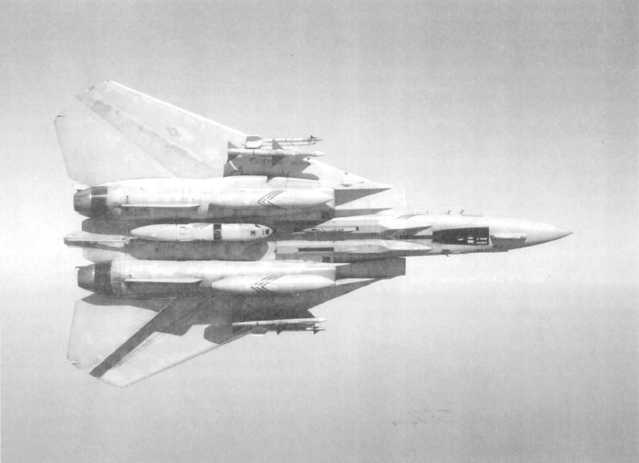but may include oblique views that are made
simultaneously to produce horizon-to-horizon
coverage along the flight line.
AERIAL PHOTOGRAPHIC SYSTEM
An aerial photographic system may simply be the
same hand-held camera you use on the ground, or it may
be a complex, pilot-controlled electronic system, such
as TARPS. The following discussion is only a brief
overview of TARPS along with a brief explanation of
aircraft cameras and associated equipment. Hand-held
systems are addressed later in this chapter under the
heading “Shooting Hand-held Aerial Photography.”
TACTICAL AIR RECONNAISSANCE
POD SYSTEM (TARPS)
With the development of F-14 Tomcats equipped
with the Tactical Air Reconnaissance Pod System
(TARPS), the Navy continues to improve its
photographic reconnaissance capabilities (fig. 4-7).
TARPS, when fully configured for the tactical
reconnaissance function, contains two photographic
sensors (cameras): one infrared reconnaissance set
(IRRS)—the electronics required to operate the
cameras and the IRRS-and the auxiliary equipment to
support the system (fig. 4-8). The TARPS can be used
in a variety of tactical photo reconnaissance situations,
such as target acquisition, prestrike target identification,
poststrike target assessment, target tracking, maritime
surveillance, and map surveillance. The TARPS is
designed to provide day and night and low-to-high
altitude reconnaissance. Operation of TARPS is
controlled by the naval flight officer/radar intercept
officer (NFO/RIO). Additionally, the pilot is provided
w i t h c a m e r a O N - O F F c a p a b i l i t y . T h e
TARPS-equipped Tomcats retain a significant offensive
capability, even when carrying out a photographic role.
The aircraft can be returned to a full-combat
Figure 4-7.—F-14 Tomcat equipped with TARPS.
4-7


